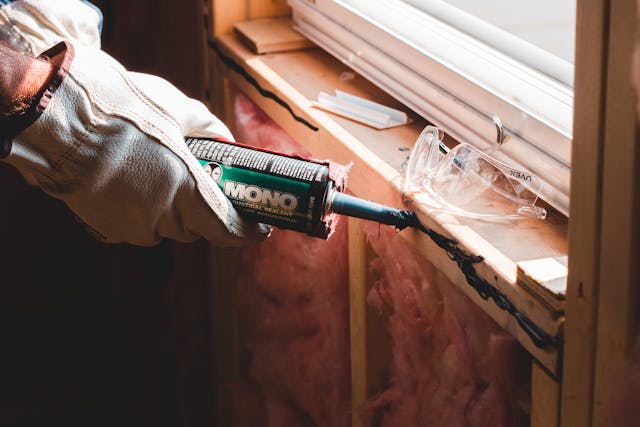Pest management goes beyond reacting to infestations; it’s about preventing them altogether! Exclusion pest control adopts a proactive approach by identifying and securing entry points that pests use to enter buildings.
In this blog, we’ll explore the strategies, benefits, challenges, and practical steps of exclusion pest control. Whether you’re dealing with rodents or seasonal insects or simply want a healthier home environment, exclusion methods offer sustainable and effective solutions. Keep reading to learn more!
What is Exclusion Pest Control
Exclusion pest control is a methodical approach to prevent pests before they invade. Unlike traditional pest control methods that only rely on pest treatments to eliminate an existing infestation, exclusion pest control focuses on these proactive measures to keep pests out from the start:

- Sealing Entry Points: One of the key principles of pest exclusions involves identifying and sealing gaps and cracks around vents and other openings that pests may use to access buildings.
- Physical Barriers: Physical barriers like mesh screens, door sweeps, and exclusion nets can also block pests’ access indoors, allowing ventilation and functionality.
- Environmental Modifications: Exclusion pest control also emphasizes environmental modifications to make properties less attractive to pests. This includes reducing moisture levels, proper waste management, and stringent landscaping practices.
Exclusion pest control takes a proactive approach by preventing pest issues before they begin rather than reacting to infestations after they occur. When implemented correctly, exclusion methods offer lasting protection against pests!
Exclusion Pest Control Strategies
As stated above, one of the first steps in the exclusion process is identifying how pests gain access to your property. Common entry points include gaps around doors and windows, cracks in foundations, vents, pipes, and utility lines. Conduct a thorough inspection both indoors and outdoors to pinpoint these vulnerabilities.
Once these entry points are identified, sealing them off from the outdoors is essential. Use caulking or weatherstripping to fill gaps around windows and doors. Repair any cracks in walls or foundations with appropriate sealants. You can also install mesh screens over vents and other openings to prevent pests from entering.

For larger openings or areas prone to pest entry, consider installing physical barriers such as door sweeps at the base of exterior doors and screens over windows. These barriers make it difficult for pests to enter and can be an effective line of defense.
Moisture attracts pests like termites and cockroaches. To reduce high humidity levels, make sure your attics, basements, and crawl spaces are adequately ventilated. Fix these leaks promptly and address any remaining water accumulation around your property to discourage pest activity.
Outdoors trim back vegetation and shrubbery away from the exterior of your home to eliminate potential pathways for pests. Keep firewood stored away from the house and elevated off the ground to prevent rodents from nesting.
Pest-Specific Exclusion Pest Control
Exclusion pest control is effective against a wide range of pests, offering tailored strategies for each type:
Rodents
- Mice and Rats: Rodents can quickly enter homes and buildings through small, inconspicuous gaps and cracks. To target rodents specifically, seal gaps around your pipes and utility lines with steel wool or caulking.
- Preventative Actions: Trim tree branches away from the roof and keep firewood stored away from the house to deter rodents from nesting. Roof rats can easily sneak into your home from long branches and take over your attic space.
Insects
- Ants: Ants can enter homes through tiny openings around doors and windows. Exclusion techniques involve sealing cracks with silicone caulk, using weatherstripping on doors, and storing food in tightly sealed containers.
- Cockroaches: To keep cockroaches out, seal openings with expandable foam or caulking and eliminate moisture sources like leaky pipes and standing water.
- Spiders: Use fine mesh screens on windows and doors, and reduce clutter to minimize hiding places.
- Termites: Termites can enter homes through wood-to-ground contact and cracks in your foundation. Use termite-resistant materials during home construction, keep your home well-ventilated to reduce moisture accumulation, and regularly inspect your home for signs of termite activity.
DIY vs. Professional Pest Control
Taking a do-it-yourself approach to exclusion pest control can be a practical choice if you possess the necessary time, tools, and skills. Many exclusion methods are accessible for homeowners, like sealing cracks with caulking to prevent pest entry, installing door sweeps to block gaps under doors, and placing mesh screens over vents to deter insects and small rodents.
However, we recommend contacting a professional for larger properties or when faced with severe pest infestations. Our skilled technicians bring years of experience and specialized knowledge to the table.
They conduct meticulous inspections to detect hidden entry points that may be missed during DIY assessments. Based on our findings, we’ll recommend and implement tailored exclusion strategies that effectively address current infestations and prevent future pest problems.
When faced with possible or existing infestations, trust the experts. Contact us at proof.!

